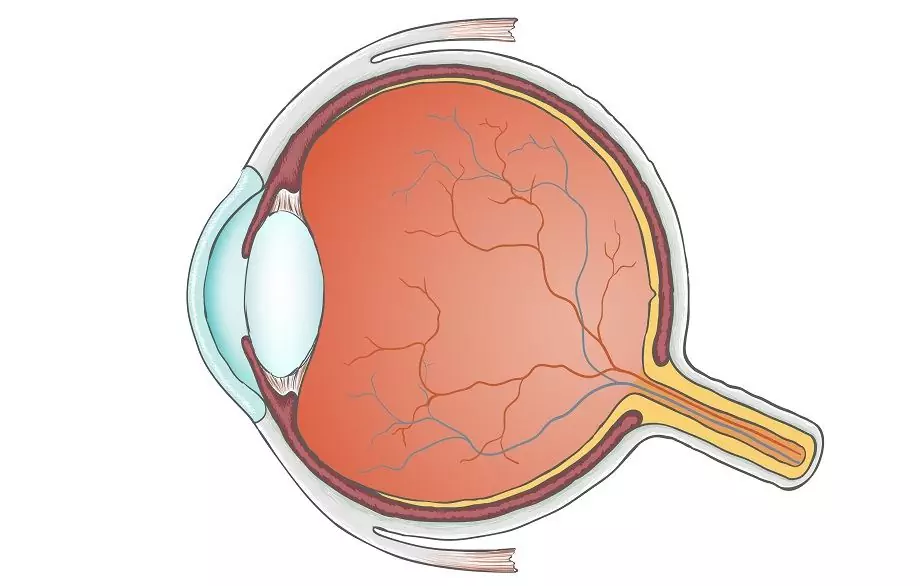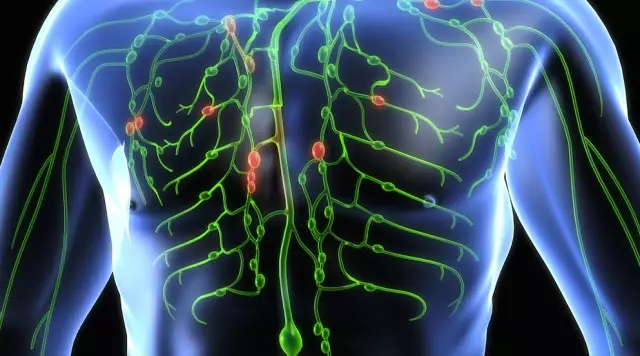- Author Rachel Wainwright [email protected].
- Public 2023-12-15 07:39.
- Last modified 2025-11-02 20:14.
Bronchi
Bronchi. general characteristics
The bronchi are part of the pathways that carry air. Being the tubular branches of the trachea, they connect it to the respiratory tissue of the lung (parenchyma).

At the level of 5-6 of the thoracic vertebra, the trachea is divided into two main bronchi: right and left, each of which enters the corresponding lung. In the lungs, the bronchi branch out, forming a bronchial tree with a colossal cross-sectional area: about 11800 cm2.
The sizes of the bronchi differ from each other. So, the right one is shorter and wider than the left, its length is from 2 to 3 cm, the length of the left bronchus is 4-6 cm. Also, the sizes of the bronchi differ by gender: they are shorter in women than in men.
The upper surface of the right bronchus is in contact with the tracheobronchial lymph nodes and the azygos vein, the posterior surface is in contact with the vagus nerve itself, its branches, as well as with the esophagus, thoracic duct and posterior right bronchial artery. The lower and anterior surfaces are with the lymph node and pulmonary artery, respectively.
The upper surface of the left bronchus is adjacent to the aortic arch, the posterior surface to the descending aorta and the branches of the vagus nerve, the anterior surface to the bronchial artery, and the lower surface to the lymph nodes.
The structure of the bronchi
The structure of the bronchi differs depending on their order. As the diameter of the bronchus decreases, their shell becomes softer, losing cartilage. However, there are some common features. There are three shells that form the bronchial walls:
- Mucous. Covered with ciliated epithelium, located in several rows. In addition, several types of cells were found in its composition, each of which performs its own functions. Goblet form a mucous secret, neuroendocrine secrete serotonin, intermediate and basal ones take part in the restoration of the mucous membrane;
- Fibromuscular cartilage. At the heart of its structure are open hyaline cartilage rings, fastened together by a layer of fibrous tissue;
- Adventitious. The membrane is formed by connective tissue, which has a loose and unformed structure.
Functions of the bronchi
The main function of the bronchi is to transport oxygen from the trachea to the alveoli of the lungs. Another function of the bronchi, due to the presence of cilia and the ability to form mucus, is protective. In addition, they are responsible for the formation of the cough reflex, which helps to eliminate dust particles and other foreign bodies.
Finally, the air, passing through a long network of bronchi, is humidified and warmed to the required temperature.
Hence it is clear that the treatment of bronchi in diseases is one of the main tasks.
Diseases of the bronchi
Some of the most common bronchial diseases are described below:
- Chronic bronchitis is a disease in which there is inflammation of the bronchi and the appearance of sclerotic changes in them. It is characterized by a cough (persistent or intermittent) with sputum production. Its duration is at least 3 months within one year, and its duration is at least 2 years. The likelihood of exacerbations and remissions is high. Auscultation of the lungs allows you to determine the hard vesicular breathing, accompanied by wheezing in the bronchi;
- Bronchiectasis is an enlargement that causes inflammation of the bronchi, dystrophy or sclerosis of their walls. Often, on the basis of this phenomenon, bronchiectasis occurs, which is characterized by inflammation of the bronchi and the occurrence of a purulent process in their lower part. One of the main symptoms of bronchiectasis is a cough, accompanied by the release of copious amounts of sputum containing pus. In some cases, hemoptysis and pulmonary bleeding are observed. Auscultation allows you to determine the weakened vesicular breathing, accompanied by dry and moist wheezing in the bronchi. Most often, the disease occurs in childhood or adolescence;
- with bronchial asthma, heavy breathing is observed, accompanied by suffocation, hypersecretion and bronchospasm. The disease is chronic, caused either by heredity, or - transferred infectious diseases of the respiratory system (including bronchitis). Asthma attacks, which are the main manifestations of the disease, most often disturb the patient at night. Also, tightness in the chest area, sharp pain in the right hypochondrium are often observed. Adequately selected treatment of the bronchi for this disease can reduce the frequency of attacks;
- Bronchospastic syndrome (also known as bronchospasm) is characterized by spasm of the smooth muscles of the bronchi, which causes shortness of breath. Most often, it is of a sudden nature and often turns into a state of suffocation. The situation is aggravated by the secretion of secretions by the bronchi, which impairs their patency, making it even more difficult to inhale. As a rule, bronchospasm is a condition accompanying certain diseases: bronchial asthma, chronic bronchitis, pulmonary emphysema.
Bronchial research methods
The existence of a whole complex of procedures that help to assess the correctness of the structure of the bronchi and their condition in diseases, allows you to choose the most adequate treatment for the bronchi in one case or another.
One of the main and proven methods is a survey, in which complaints of cough, its features, the presence of shortness of breath, hemoptysis and other symptoms are noted. It is also necessary to note the presence of those factors that negatively affect the state of the bronchi: smoking, work in conditions of increased air pollution, etc. Particular attention should be paid to the patient's appearance: skin color, chest shape and other specific symptoms.
Auscultation is a method that allows you to determine the presence of changes in breathing, including wheezing in the bronchi (dry, wet, medium bubbly, etc.), respiratory rigidity and others.
With the help of X-ray examination, it is possible to reveal the presence of enlargement of the roots of the lungs, as well as violations in the pulmonary pattern, which is characteristic of chronic bronchitis. A characteristic sign of bronchiectasis is the expansion of the lumen of the bronchi and the compaction of their walls. For tumors of the bronchi, local darkening of the lung is characteristic.
Spirography is a functional method for studying the state of the bronchi, which allows to assess the type of violation of their ventilation. Effective for bronchitis and bronchial asthma. It is based on the principle of measuring the vital capacity of the lungs, forced expiratory volume and other indicators.
Found a mistake in the text? Select it and press Ctrl + Enter.






